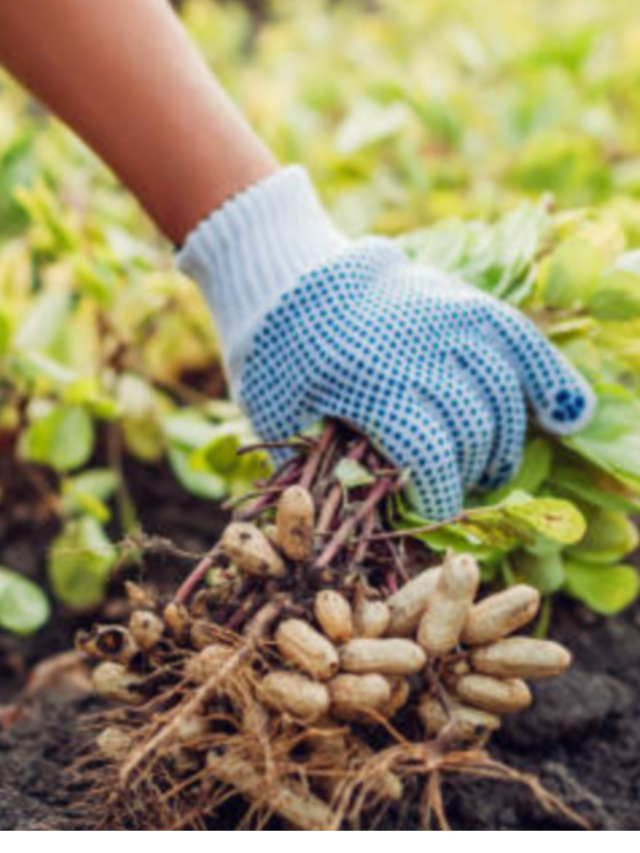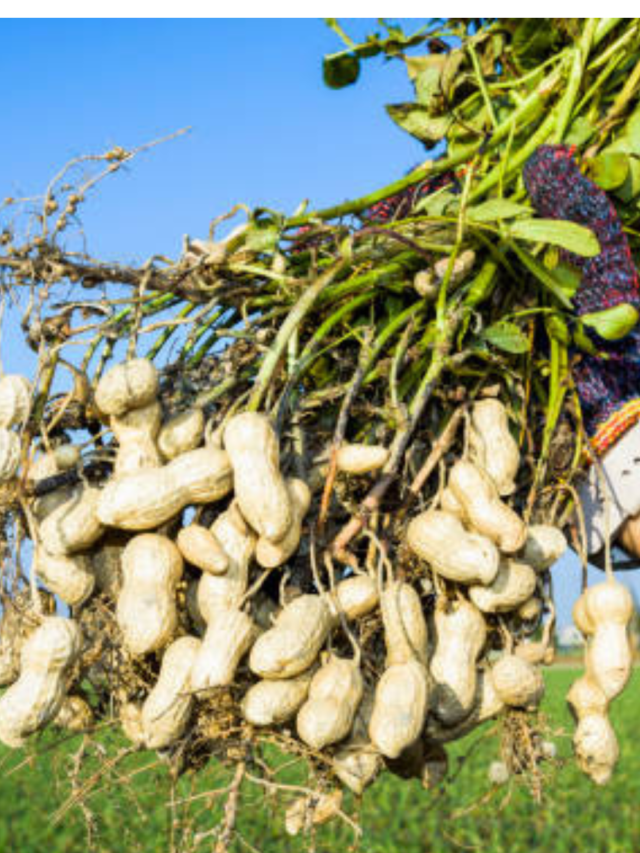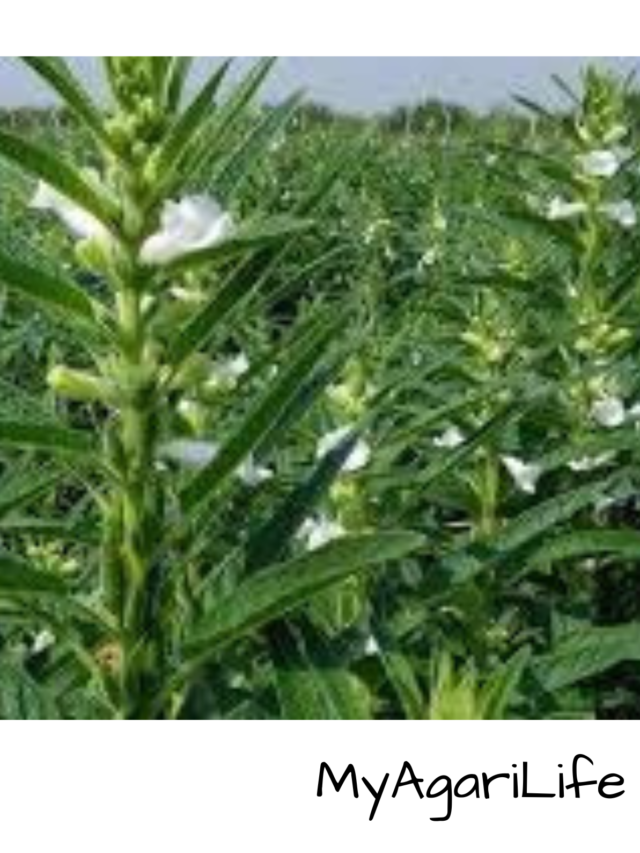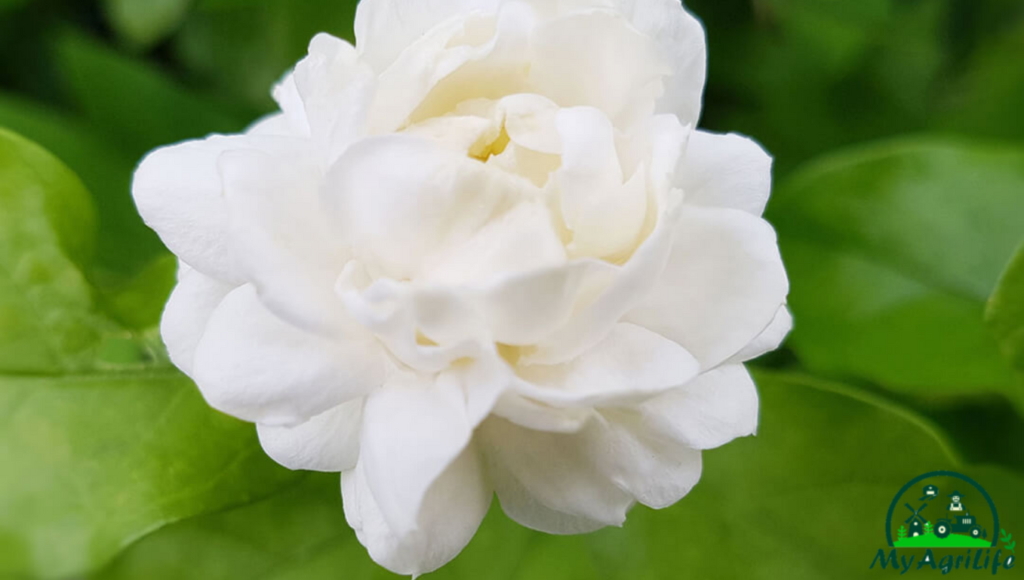
Jasmine, also known as “Chameli” in Hindi, is a fragrant flowering plant belonging to the Oleaceae family. It is native to tropical and subtropical regions of Eurasia, Australasia, and Oceania.
The plant is prized for its small white flowers, which are highly fragrant and often used in perfumes, aromatherapy, and religious ceremonies. In India, jasmine is also commonly used to adorn women’s hair, particularly during weddings and other auspicious occasions.
Jasmine plants are typically climbers or shrubs and can grow up to 10 meters tall. The leaves are typically dark green and glossy, and the flowers are typically white, although some species may have pink or yellow blooms. Jasmine is a popular garden plant and is often grown for its attractive foliage and sweet-smelling flowers.
Jasmine is also believed to have several medicinal properties and is used in traditional medicine for a variety of ailments, including headaches, anxiety, and digestive issues. However, it’s important to note that the efficacy and safety of jasmine for medicinal purposes have not been scientifically proven, and it’s best to consult a healthcare professional before using it.
Seed Specification Jasmine
The seed specification for jasmine may vary depending on the specific species or cultivar. However, in general, here are some common specifications for jasmine seeds:
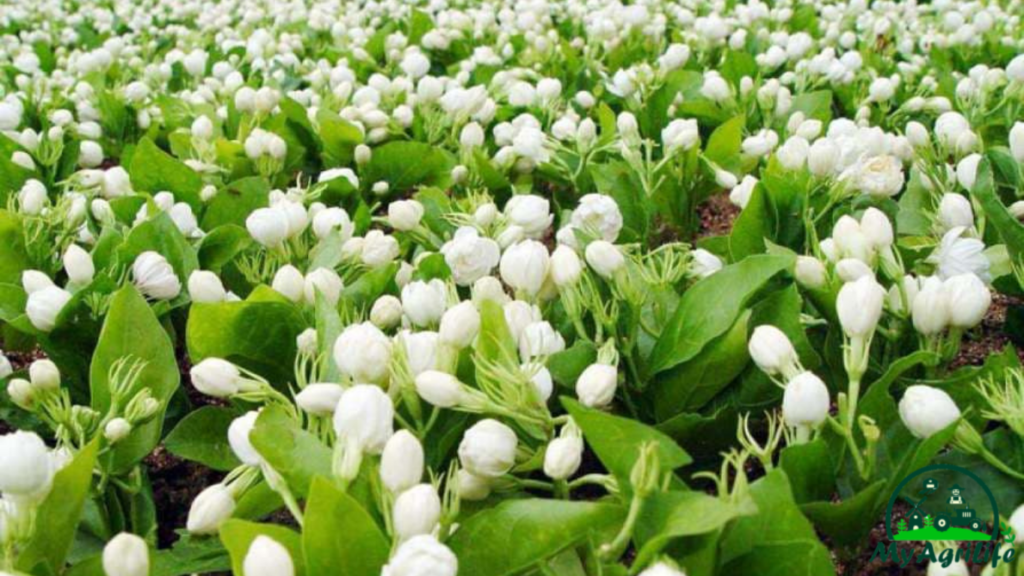
1.Size: Jasmine seeds are usually small, about 1-2 mm in diameter.
2.Color: Jasmine seeds are typically brown or black, but can also be white or light brown.
3.Texture: Jasmine seeds are usually hard and smooth.
4.Germination rate: The germination rate of jasmine seeds can vary depending on the species and growing conditions, but it’s generally around 60-80%.
5.Germination time: Jasmine seeds typically take around 1-2 weeks to germinate, but can sometimes take longer.
6.Planting depth: Jasmine seeds should be planted at a depth of about 1 cm in well-draining soil.
7.Watering: Jasmine seeds should be watered regularly, but not excessively. Overwatering can cause the seeds to rot.
It’s important to note that some jasmine species are propagated through cuttings rather than seeds. If you’re planning to grow jasmine from seeds, make sure to do your research on the specific species or cultivar to ensure that you’re using the correct planting and care techniques.
Land Preparation & Soil Health Jasmine
Land preparation and soil health are crucial for growing healthy and vibrant jasmine plants. Here are some tips for preparing the land and maintaining soil health for jasmine:
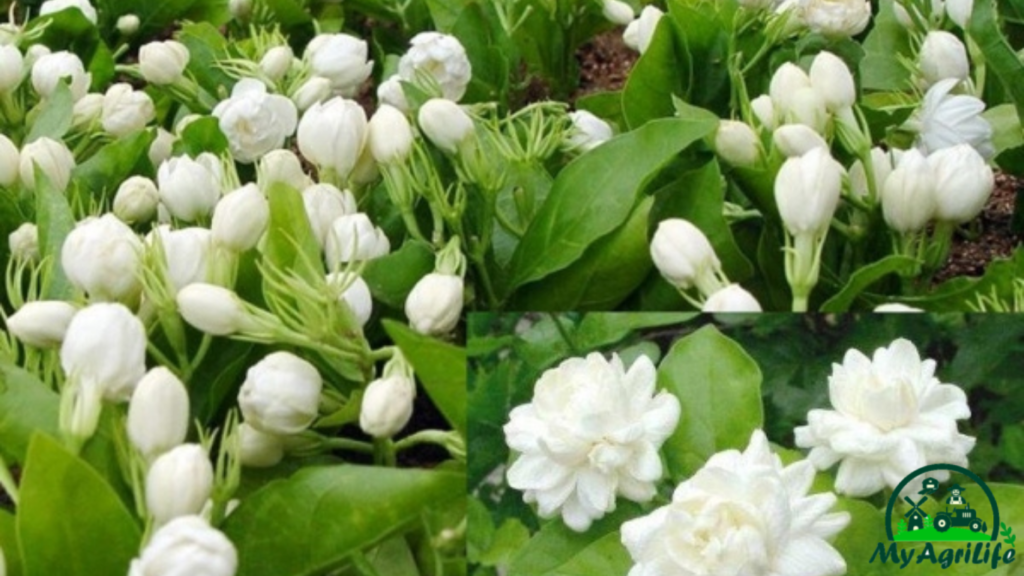
1.Site selection: Choose a site with well-drained soil and adequate sunlight for growing jasmine.
2.Soil testing: Conduct a soil test to determine the soil pH and nutrient levels. Jasmine prefers slightly acidic soil with a pH range of 6.0 to 7.0.
3.Soil amendments: Add organic matter such as compost, aged manure, or leaf mold to improve soil fertility, structure, and water-holding capacity. Incorporate the amendments into the soil to a depth of at least 6 inches.
4.Soil drainage: Jasmine prefers well-drained soil. If the soil is heavy or compacted, incorporate sand or other coarse materials to improve soil drainage.
5.Mulching: Apply a layer of organic mulch such as straw, wood chips, or leaves around the base of the plant. Mulch helps retain soil moisture, suppress weed growth, and add organic matter to the soil as it breaks down.
6.Crop rotation: To prevent soil-borne diseases and pests, rotate jasmine with other crops that have different nutrient requirements.
7.Soil testing: Regularly conduct soil tests to monitor nutrient levels and pH. Amend the soil as needed to maintain optimal soil health and plant growth.
By following these tips, you can create a healthy and productive environment for growing jasmine plants.
Crop Spray & Fertilizer Specification Jasmine
Crop spray and fertilizer specifications for jasmine may vary depending on the specific species or cultivar, as well as the growing conditions. However, here are some general guidelines for crop spray and fertilizer for jasmine:
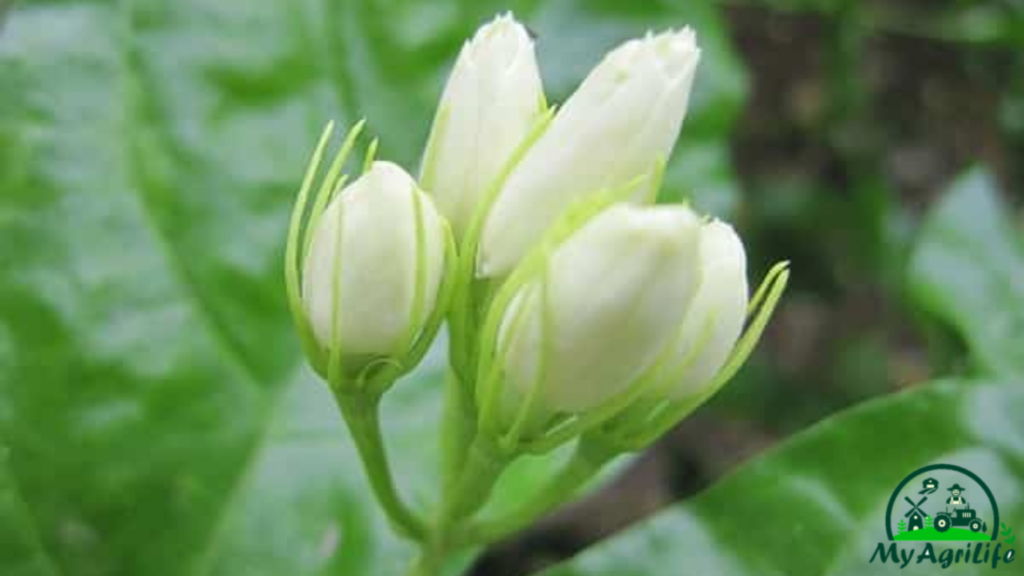
1.Fertilizer: Jasmine plants require a balanced fertilizer that provides equal amounts of nitrogen, phosphorus, and potassium (NPK). A 10-10-10 or 12-12-12 fertilizer can be applied every 4-6 weeks during the growing season. However, it’s important not to over-fertilize, as this can cause leaf burn and other problems.
2.Organic Fertilizer: Jasmine can also be fertilized with organic fertilizers such as fish emulsion, blood meal, bone meal, or compost tea. These organic fertilizers release nutrients slowly and improve soil health.
3.Foliar Spray: Jasmine can benefit from foliar sprays, which are sprayed directly on the leaves. A foliar spray of fish emulsion or seaweed extract can be applied every 2-3 weeks during the growing season to provide additional nutrients and improve plant health.
4.Insecticidal Spray: Jasmine plants can be susceptible to aphids, mealybugs, and other pests. An insecticidal spray containing neem oil or insecticidal soap can be applied to control these pests.
5.Fungicidal Spray: Jasmine can also be susceptible to fungal diseases such as powdery mildew or black spot. A fungicidal spray containing copper sulfate or sulfur can be applied to control these diseases.
It’s important to follow the instructions on the product label carefully and to use crop sprays and fertilizers in moderation. Overuse can cause plant damage and negatively impact soil health.
Weeding & Irrigation Jasmine
Weeding and irrigation are important aspects of jasmine plant care. Here are some tips for weeding and irrigating jasmine:
1.Weeding: Jasmine plants require regular weeding to remove competing plants and to ensure that they have adequate access to water and nutrients. Hand weeding is the best option for jasmine as it minimizes the risk of damaging the shallow roots of the plant. Mulching can also help suppress weed growth.
2.Irrigation: Jasmine plants require consistent moisture, but overwatering can be harmful. Water the plants deeply once or twice a week, depending on the weather and soil conditions. Watering should be adjusted during rainy periods. Be sure to water the plants at the base, as overhead watering can cause leaf spot and other problems.
3.Water Quality: Jasmine plants prefer well-drained soil and don’t tolerate waterlogged conditions. If the soil is heavy or poorly drained, consider installing a drainage system or amending the soil to improve drainage. Water quality is also important. Avoid using water that is high in salt or other minerals, as this can harm the plants.
4.Drought Conditions: During periods of drought, jasmine plants may require more frequent watering to prevent stress. However, be careful not to overwater, as this can lead to root rot.
By following these tips for weeding and irrigation, you can help ensure that your jasmine plants remain healthy and vibrant.
Harvesting & Storage Jasmine
Jasmine flowers are harvested for their fragrant oils, which are used in perfumes, cosmetics, and aromatherapy products. Here are some tips for harvesting and storing jasmine:
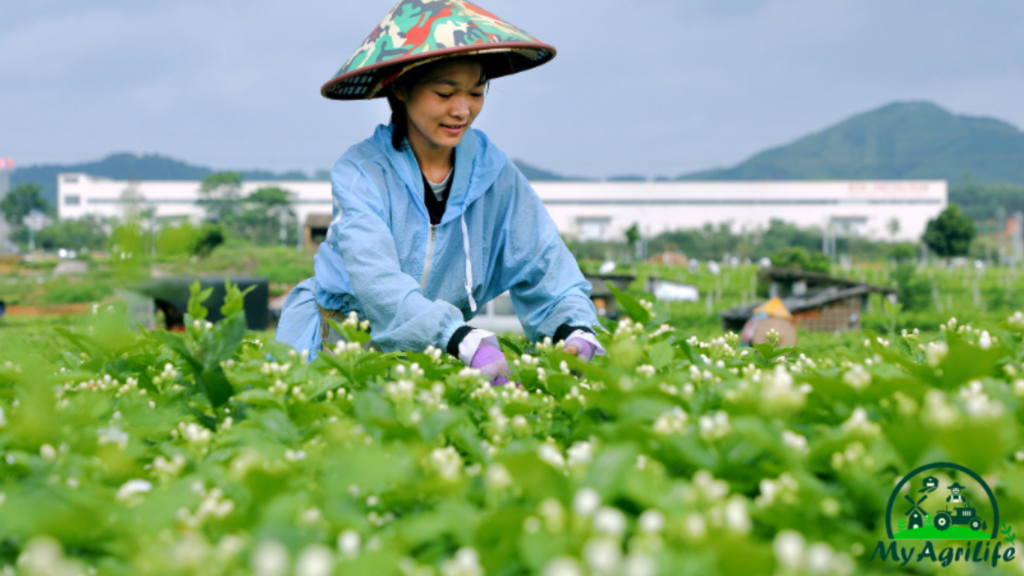
1.Harvesting: Jasmine flowers are usually harvested in the early morning when the scent is most concentrated. The flowers should be picked when the buds are still closed, as this is when the fragrance is strongest. Cut the stem below the calyx (the green, leaf-like structure at the base of the flower) using sharp, clean scissors or pruning shears.
2.Processing: Once the flowers have been harvested, they should be processed as quickly as possible to prevent deterioration of the fragrance. Jasmine flowers can be processed by steam distillation to extract the essential oil, or they can be used fresh to make jasmine tea or other products.
3.Storage: If you’re storing fresh jasmine flowers, wrap them in a damp paper towel and place them in a plastic bag in the refrigerator. They will keep for a few days, but the fragrance will start to diminish over time. Dried jasmine flowers can be stored in an airtight container in a cool, dark place for up to six months.
4.Preserving the fragrance: To preserve the fragrance of fresh jasmine flowers, you can infuse them in oil or alcohol. To make a jasmine oil infusion, place fresh jasmine flowers in a clean glass jar and cover them with a carrier oil such as jojoba or sweet almond oil. Let the mixture sit for several days, then strain out the flowers and transfer the infused oil to a dark glass bottle. To make a jasmine alcohol infusion, follow the same process using vodka or other high-proof alcohol instead of oil.
By following these tips for harvesting and storing jasmine, you can help preserve the delicate fragrance of these beautiful flowers.
Conclusion
asmine farming can be a rewarding and profitable venture when done properly. To succeed in jasmine farming, it’s important to pay close attention to the land preparation, soil health, crop spray and fertilizer specification, weeding, irrigation, harvesting, and storage of jasmine plants.
Some of the key takeaways from the information provided in this conversation are:
Land preparation is important in creating a suitable environment for jasmine plants to grow.
Soil health is crucial for healthy jasmine plants. Proper soil testing and amendment can help maintain the right balance of nutrients and pH levels.
Proper crop spray and fertilizer specifications can help provide the right nutrients and protect against pests and diseases.
Weeding and irrigation are important aspects of jasmine plant care. Regular weeding can help reduce competition for water and nutrients, while consistent irrigation can ensure that the plants receive adequate moisture.
Proper harvesting and storage of jasmine flowers can help preserve their delicate fragrance, making them suitable for various uses such as perfumes, teas, and aromatherapy products.
By keeping these considerations in mind, you can help ensure that your jasmine farming venture is successful and sustainable.
